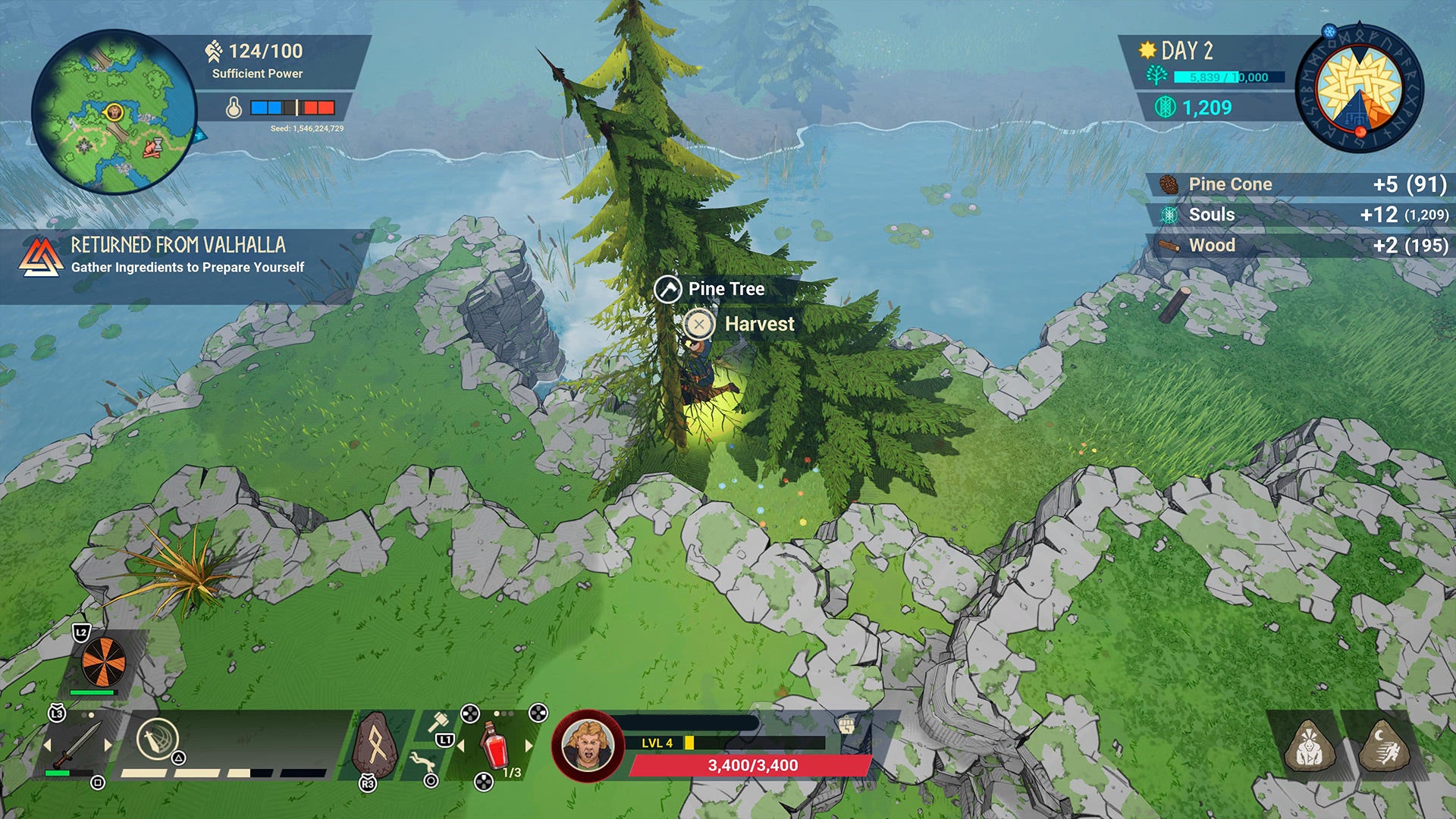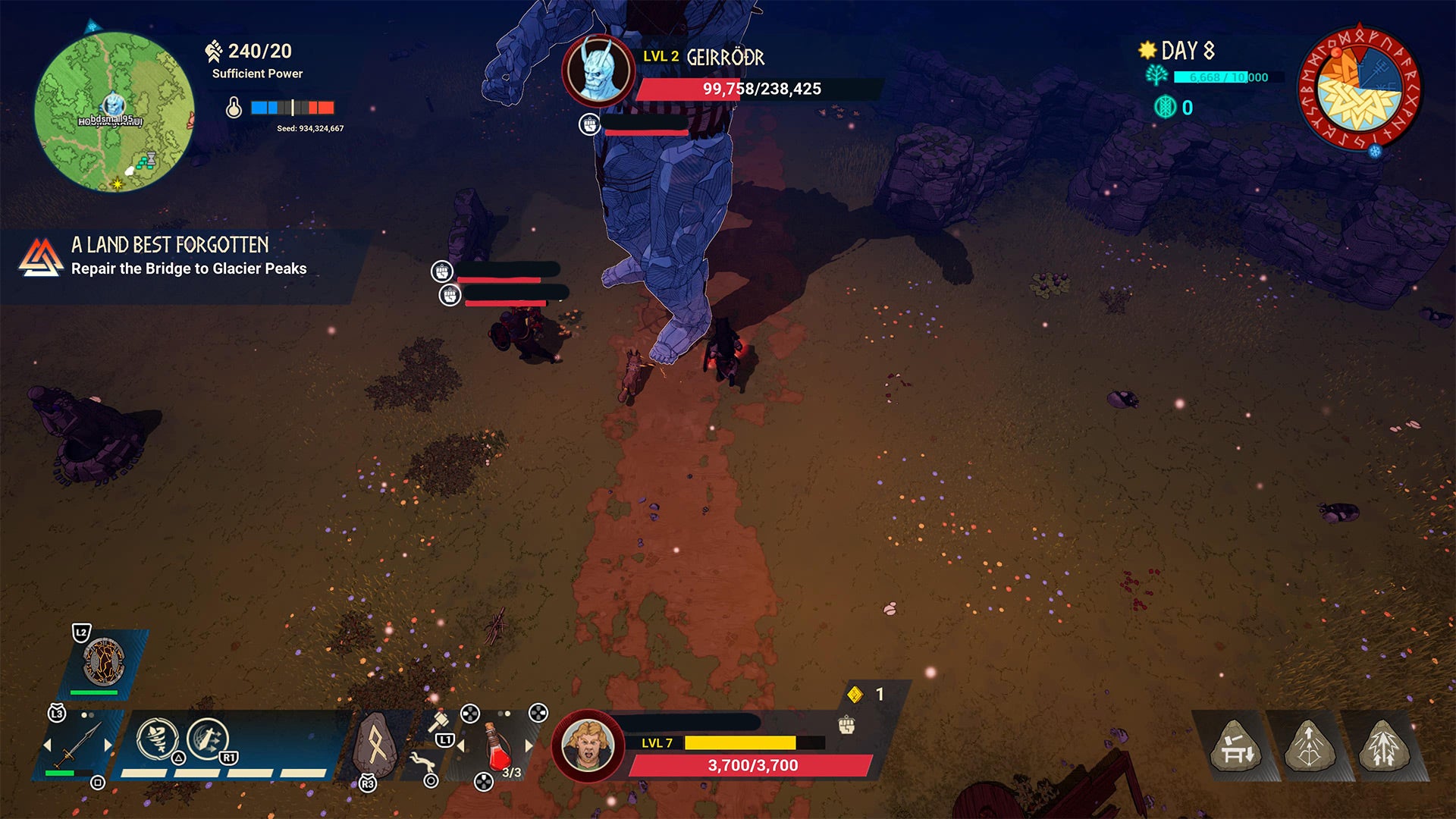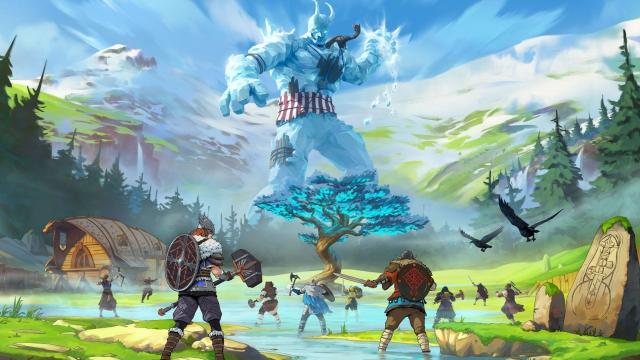I wanted to like Tribes of Midgard. It has great style, with wonderful visuals that feel ripped out of an ancient painting. The combat is fun and responsive. But it also incorporates some of the worst parts of roguelikes and survival games and quickly becomes repetitive, with little payoff or progression.
Published by Gearbox Software and developed by Norsfell Games, Tribes of Midgard is a top-down roguelike action-survival RPG. In it, you take on the role of a — give me a second here — Einherjar, a viking who has died and gone on to Valhalla. But, when some evil forces rise up to destroy — one sec, googling again — Yggdrasil, the old Norse gods send you to protect the life tree’s seeds from armies of monsters and giants.
Each night waves of enemies arrive to destroy the seed, and you must hold off the grunts while also hunting down massive, powerful giants who have very bad intentions toward your seed. As epic as that potentially sounds, most of your time in Tribes of Midgard is going to be spent chopping down trees, picking up rocks, and “heroically” beating packs of wolves to death.
Do you like running around breaking down trees, mining rocks, and farming enemies for resources? No? Well, how about losing all your progress when you die, with nothing to show for it? Unfortunately, Tribes of Midgard tries to combine survival-game trappings with a roguelike foundation, but ends up grabbing the worst and most annoying parts of both.

You’ll need to gather a lot of resources to upgrade your small village, the merchants who live there, and the gear you need to survive. But even when you have enough, building is mostly a frustrating waste of your time. Building things is finicky, rarely useful, and sometimes just doesn’t work. I would often try to construct a ramp to reach a higher part of the map, only for the ledge to block my viking from progressing. But you probably won’t even build anything because resources are so scarce that you’ll never have enough.
You can play Midgard solo or with up to nine other players. Of the 12 or so hours I played, a lot of it was by myself, and some with random online players pulled in via matchmaking. I can confidently say that Midgard wasn’t built for soloing. It’s technically doable, but not very fun. As the game grows more difficult, you’ll need astronomical amounts of resources to keep progressing. The amounts of rare resources demanded by sword and armour upgrades shocked me. Farming for this stuff is time-consuming, and as a solo player, it’s a hassle. Every night you have to race back to your village to protect it from the monsters, lest they destroy your seed and end your game.
With other players, Midgard becomes more chaotic, a bit easier, and more enjoyable. Watching almost a dozen vikings run around a large, procedurally generated map is a hoot, and even without voice or text chat, I often found having more players around made it easier to upgrade the village and multitask. I did encounter some combat lag online; usually tight and responsive, fighting became a bit more floaty and annoying with 10 people playing together. But I made so much more progress as part of a tribe than on my own the trade-off was worth it.
The ultimate reason I’ll probably stop playing Tribes of Midgard is what happens after you lose.
Many of my runs would take over an hour to reach an endpoint. A few hit closer to three. Midgard’s a hard game, and often ends when a giant rushes into your village and destroys the seed before you can intervene. Being a roguelike, death is an expected part of the cycle.

However, Tribes of Midgard, unlike so many recent roguelike hits, doesn’t offer any real meta-progression or permanent unlocks or upgrades for all your hard work. A battle pass for the current season lets you unlock some starter kits, but most of these are only useful in the first 20 minutes or so of a run. For example, one starter kit gives you low-quality weapons you’ll quickly outgrow each time you begin anew. The rest of the battle pass consists of cosmetics and coins to unlock more cosmetics and other not-very-useful rewards.
Considering how long games can take, how much repetitive farming for resources you do in just one of these runs, and how hard the going can get after a few nights, be prepared to spend hours and hours losing. I’d be more into that if I still made some progress, but you get nothing but memories for all this trouble. There’s no narrative that moves forward with each loss, or abilities you can boost between runs to help you skip the early bullshit and move forward more quickly. It feels like a weirdly old way to do a roguelike that also ignores the great innovations games like Hades and Rogue Legacy have brought to the gen over the last decade.
All of the pain points add up and make it hard to feel like I’m some epic viking-demi-god-warrior saving the world. Instead, I often feel like an overworked, underpaid mercenary being asked to spin more plates while also finding more plates to spin. Then some big bully knocks all my plates down, steals my hard-earned gear, and tells me to start over. That’s not much fun and it’s shame, because while Tribes of Midgard looks great, it’s mostly a frustrating mess.

Leave a Reply